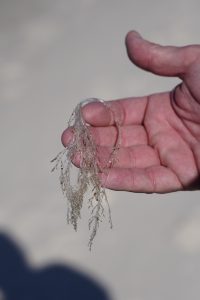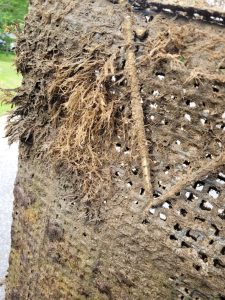
Marine invertebrate species are among the most diverse group of organisms on the planet. From giant squid and octopus with huge brains and mind-blowing camouflage capability to free-floating comb jellies, they are endlessly fascinating.
At least 11 phyla of marine invertebrates can be found in the Gulf of Mexico. Keep in mind that humans are in the phylum Chordata (with sea squirts!), which includes every single animal with a backbone or notochord. This means the 11 types of marine vertebrates in those different phyla (including crabs, worms, corals, and shellfish) are more different from each other than we humans are from fish, birds, and every other mammal on the planet.
It should come as no surprise, then, that most of the messages I receive accompanied by a photo and a “what is this?” are marine invertebrates. Many of these soft-bodied creatures wash up on the beach and draw the eye of curious passersby.
Recently, my colleagues with the Pensacola & Perdido Bays Estuary Program encountered a bryozoan, which inhabits that murky world of backbone-free ocean dwellers. There are over 60 species of bryozoans found in the northern Gulf of Mexico, but with some research and confirmation from a few other colleagues, we believe this one is the nearly colorless species Bugula/Bugulina stolonifera. The species is native to the Atlantic Ocean and associated water bodies, but has become increasingly invasive on the West Coast.

More broadly, bryozoans compose an entire phylum of their own—Bryozoa—and are referred to as the “moss animals.” There are two types—branching and encrusting. The encrusting type have tightly packed hydroids that grow in one layer on a substrate. The branching variety are very plantlike in appearance, anchoring on a hard surface and growing up with wavy, zigzag-patterned hydroid colony structures. Bugula are part of an even more specific subcategory of “arborescent” (tree-like) bryozoans.

Individual hydroids with different specializations (called zooids) work together to play roles in feeding, defense, and reproduction. The defensive zooids, called avicularia, have tiny little claws that fend off potential predators by pinching them. Bryozoans are food for sea spiders and sea urchins.
Bryozoans are filter feeders that use tiny tentacles to direct food towards their mouths. They will grow on anything not moving quickly, including decorator and hermit crabs, sargassum, sponges, oysters, artificial reefs, and oil rigs. Bryozoans are common worldwide and found most frequently in the Gulf of Mexico during the summer. Over the last few months, they have been particularly problematic “fouling organisms” on oyster aquaculture operations in the area, growing all over the bags and rendering oyster growth and management difficult.
 14
14
